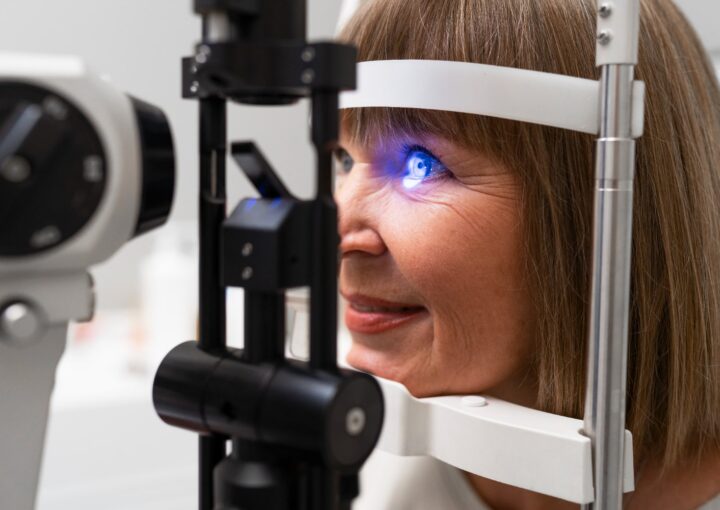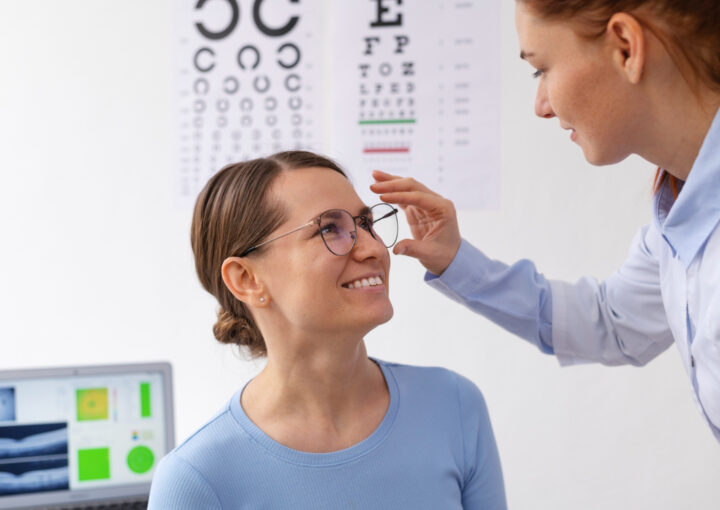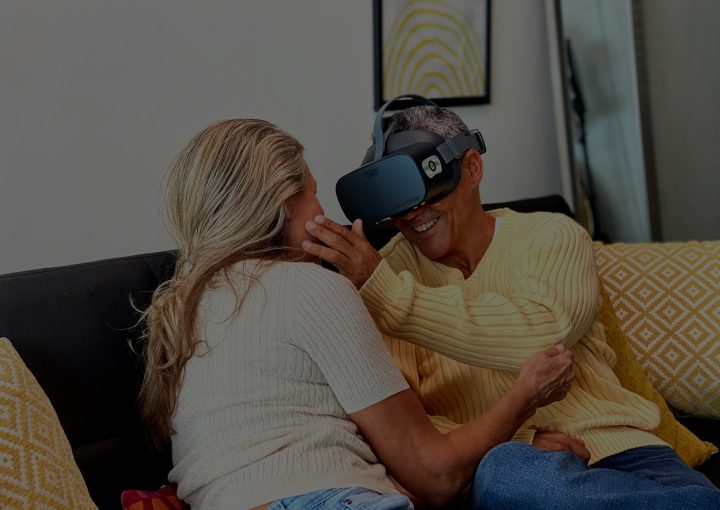
Vision Buddy – Wearable Glasses for Legally Blind


Maya Williams
Low vision is a condition that limits the ability to perform daily tasks, even with corrective measures like glasses or contact lenses. Understanding its causes is crucial for prevention, management, and treatment. This article explores the most common and lesser-known causes of low vision, ranging from age-related macular degeneration (AMD) to environmental factors like excessive sun exposure. It also highlights the connection between vitamin deficiencies, chronic medical conditions, and low vision, offering insights into the importance of early diagnosis and consultation with an eye specialist.
By the end of this article, you’ll have a comprehensive understanding of 30 key causes of low vision, including lifestyle factors, genetic mutations, and neurological conditions, and how these may impact your visual acuity and field of vision.
What is Low Vision?
Low vision is a serious type of visual impairment that can’t be completely fixed with glasses, contact lenses, or medical treatments. People with low vision often find their vision to be blurry, unclear, or limited. This can make everyday activities like reading a book, recognizing a friend’s face, or driving a car very challenging.
The causes of low vision are usually linked to damage in different parts of the eye, such as the optic nerve or the areas of the brain that process visual information. A low vision eye specialist or eye medical specialist can diagnose these issues and provide guidance on how to manage and make the most of your remaining vision. With the right support, even with the blur and unclear vision, it’s possible to find ways to navigate and enjoy life.
Main and Most Common Causes of Low Vision
The most common causes of low vision are:
- Age-Related Macular Degeneration (AMD): The leading cause of low vision in older adults, AMD damages the macula, resulting in central vision loss.
- Glaucoma: Increased intraocular pressure damages the optic nerve, causing peripheral vision loss.
- Diabetic Retinopathy: High blood sugar levels damage blood vessels in the retina, leading to vision impairment.
- Cataracts: A clouding of the eye’s natural lens that causes blurry or hazy vision.
- Retinitis Pigmentosa: A genetic disorder that progressively narrows the field of vision.
Detailed Causes of Low Vision
1. Age-Related Macular Degeneration (AMD)
Age-Related Macular Degeneration (AMD) harms the macula, which is the central part of the retina in your eye. This damage leads to a loss of central vision, making it hard to see things right in front of you, like reading, driving, or recognizing faces. People often notice that straight lines appear wavy, and it can create a blind spot in the middle of their field of view.
It’s a condition that impacts millions of adults over the age of 50 and is the main reason for low vision in developed countries. While AMD doesn’t usually cause complete blindness, it can significantly affect everyday activities and quality of life. Treatment options, such as injections, laser therapy, and vitamins, aim to slow down its progression and preserve as much vision as possible. Regular check-ups with an eye specialist are crucial for managing AMD effectively.
2. Glaucoma
Glaucoma, often known as the “silent thief of sight,” is a serious eye condition. It damages the optic nerve, usually because of high pressure inside the eye. This condition starts by narrowing your field of vision, creating what’s known as tunnel vision. If it’s not treated, glaucoma can eventually lead to blindness. It’s a gradual process, so regular check-ups with an eye specialist are crucial for early detection and management. Treatment options like eye drops, medications, and surgeries aim to reduce eye pressure and protect your vision.
3. Diabetic Retinopathy
Diabetic Retinopathy is an eye condition that happens when diabetes harms the tiny blood vessels in the retina, the part of the eye that senses light. Over time, these damaged vessels can leak fluid or blood, causing vision to become blurry or unclear. In more severe cases, this can even lead to the retina detaching, which can cause significant vision loss or blindness if not treated promptly.
People with this condition might notice dark spots or strings floating in their vision, and tasks like reading or seeing details can become difficult. Regular check-ups with an eye specialist are essential, as early detection and treatment—such as laser therapy, injections, or surgery—can help manage the condition and protect your vision. Managing diabetes well is also crucial in preventing further damage.
4. Cataracts
Cataracts are a common eye condition, especially among older adults. They make the lens of the eye cloudy, leading to vision that is blurry or dim. It’s like trying to see through a frosted window, which can make everyday activities like reading or driving quite difficult.
The good news is that cataracts can be corrected with a simple and effective surgery. During this procedure, the cloudy lens is replaced with a clear artificial one, restoring vision and making everything sharp and clear again. Regular visits to an eye specialist are important for early detection and treatment. With the right care, cataracts can be managed, helping you see the world clearly once more.
5. Retinitis Pigmentosa
Retinitis Pigmentosa (RP) is a genetic disorder that affects the eyes, slowly narrowing peripheral vision over time. People with RP often find that their side vision gradually gets worse, like looking through a narrowing tunnel. This condition also makes it especially hard to see in low light or at night.
As RP progresses, it can become challenging to perform daily activities that rely on a wide field of vision. While there is currently no cure for RP, regular check-ups with an eye specialist can help manage the condition. With support and adaptive strategies, individuals with RP can still lead active and fulfilling lives.
6. Optic Nerve Atrophy
Optic Nerve Atrophy is a condition that happens when the optic nerve gets damaged. This damage can be caused by different factors such as trauma, infections, or neurological conditions. When the optic nerve is harmed, it affects your ability to see clearly, leading to vision impairment.
People with Optic Nerve Atrophy might experience difficulty seeing details, colors might appear faded, and their overall vision could be blurry or unclear. It’s important to see an eye specialist who can diagnose the problem and suggest ways to manage it. Although there’s no way to repair the damage completely, treatments and strategies can help make the most of the remaining vision, allowing individuals to continue with their daily activities.
7. Brain Injury or Stroke
When someone suffers from a traumatic brain injury (TBI) or a stroke, it can affect the way their brain processes visual information. This disruption can lead to partial or even total vision loss.
People who have experienced a TBI or stroke might find that their vision becomes blurry, unclear, or that they lose sight in certain areas. It’s like parts of the visual field just disappear, making it hard to see and navigate the world around them.
An eye specialist can help diagnose the extent of vision loss and suggest ways to adapt. Rehabilitation and specific therapies can also aid in improving visual abilities and coping with the changes. With the right support, individuals can find strategies to manage their vision loss and continue to lead active lives.
8. Retinopathy of Prematurity
Retinopathy of Prematurity (ROP) is a condition that affects premature babies. When babies are born too early, the blood vessels in their retinas can grow abnormally. This irregular growth can sometimes cause the retina to detach, leading to vision problems or even vision loss.
Parents and caregivers might notice that the baby doesn’t seem to track objects with their eyes as they should. Regular visits to an eye specialist are essential for detecting and managing ROP early. Treatments like laser therapy or cryotherapy can help prevent further damage and protect the baby’s vision as they grow. With prompt medical attention, many babies with ROP can go on to have healthy vision.
9. Corneal Diseases
Corneal diseases like keratoconus or corneal dystrophy can cause serious issues with your vision. These conditions lead to scarring and irregularities in the cornea, the clear front part of your eye. As a result, your vision might become blurry or distorted, making it hard to see clearly.
People with corneal diseases often find that their vision gets worse over time. It’s like looking through a scratched or dirty window, which can make everyday tasks challenging. Visiting an eye specialist is essential for diagnosing and treating these conditions. Treatments can include special contact lenses, medications, or even surgery to help improve vision and manage the symptoms. With the right care, it’s possible to reduce the impact of corneal diseases on your daily life.
10. Vitamin A Deficiency
Vitamin A Deficiency is a condition that can cause serious vision problems. Without enough vitamin A, people can develop night blindness, making it hard to see in low light. This deficiency can also damage the retina, the part of the eye that helps us see.
Vitamin A Deficiency is particularly common in developing countries where access to a balanced diet may be limited. Ensuring an adequate intake of vitamin A through diet or supplements is crucial to prevent these vision issues. Regular check-ups with an eye specialist can help detect and address any signs of deficiency early on, ensuring better eye health and vision.
11. Albinism
Albinism is a genetic condition that impacts the amount of pigment in the eyes, skin, and hair. When it comes to vision, this lack of pigment can cause several problems. People with albinism often have poor vision and are very sensitive to light. It’s like being in bright sunlight without sunglasses, where everything appears too intense and hard to see.
Albinism can also lead to other eye issues, such as nystagmus (involuntary eye movements) and strabismus (misaligned eyes), which can make vision even more challenging. Regular check-ups with an eye specialist are important to help manage these symptoms and find ways to protect and improve vision. With the right care and adaptive strategies, individuals with albinism can navigate their world more comfortably.
12. Diabetic Macular Edema (DME)
Diabetic Macular Edema (DME) is a complication of diabetic retinopathy where fluid builds up in the macula, the central part of the retina responsible for sharp vision. This fluid buildup causes the macula to swell, leading to blurry vision1.
People with DME might notice that straight lines look wavy, colors seem less vibrant, and their central vision becomes increasingly unclear. Early diagnosis and treatment are crucial to managing DME and preventing further vision loss1. Treatments can include medications, laser therapy, and injections to reduce the swelling and protect vision
13. Hypertension (High Blood Pressure)
Hypertension, or high blood pressure, isn’t just a concern for your heart—it can also affect your eyes. When blood pressure stays high for a long time, it can damage the tiny blood vessels in your retina, the part of your eye that helps you see clearly. This damage can lead to vision problems, making things appear blurry or unclear.
People with hypertension might notice changes in their vision, such as difficulty seeing details or sudden vision loss. It’s important to have regular check-ups with an eye specialist to detect any damage early on. Managing high blood pressure through a healthy lifestyle and medications can help protect your eyes and keep your vision sharp.
14. High Myopia (Nearsightedness)
High myopia, or severe nearsightedness, is more than just needing glasses to see things at a distance. When myopia is very severe, it stretches and thins the retina, increasing the chances of serious eye problems. People with high myopia are at a higher risk for conditions like retinal detachment, where the retina pulls away from its normal position. This can cause sudden vision loss and requires urgent medical attention.
Additionally, high myopia can lead to cataracts, which cloud the eye’s lens, and glaucoma, which damages the optic nerve due to high eye pressure. Both of these conditions can contribute to low vision if not treated properly. Regular check-ups with an eye specialist are essential to monitor and manage these risks.
15. Amblyopia (Lazy Eye)
Amblyopia, commonly known as “lazy eye,” happens when one eye doesn’t develop as it should during early childhood. This results in poor vision in the affected eye. It’s not just that the eye looks lazy; the brain also starts to favor the stronger eye, which worsens the condition.
Kids with amblyopia might struggle with depth perception and have difficulty with tasks that require sharp vision. Treatments often include wearing an eye patch over the stronger eye to force the weaker one to work harder, or using special glasses to correct vision issues.
16. Strabismus (Crossed Eyes)
Strabismus, commonly known as “crossed eyes,” is a condition where the eyes don’t align properly. One eye might look straight ahead while the other turns in, out, up, or down. This misalignment can cause double vision, making it hard to focus on a single image.
If strabismus isn’t treated, it can lead to amblyopia (lazy eye) in the affected eye. This happens because the brain starts to ignore the input from the misaligned eye, leading to poor vision in that eye over time. Treatments like special glasses, eye exercises, or surgery can help correct the alignment.
17. Sickle Cell Retinopathy
Sickle Cell Retinopathy is a condition that affects people with sickle cell disease, a genetic blood disorder. In this condition, the abnormal shape of red blood cells causes blockages in the blood vessels of the retina, the light-sensitive tissue at the back of the eye. This blockage can lead to visual impairment as the retina doesn’t get enough oxygen.
People with sickle cell retinopathy might experience symptoms like blind spots, sudden flashes of light, or floaters in their vision.
18. Retinal Detachment
Retinal Detachment is a serious eye condition where the retina, the thin layer of tissue at the back of the eye, pulls away from its supportive layers. This separation interrupts the retina’s function, leading to sudden vision problems.
People might notice sudden flashes of light, floaters (tiny specks that drift through the field of vision), or a shadow that seems to cover part of their vision. If this condition isn’t treated quickly, it can lead to permanent vision loss.
Getting immediate help from an eye specialist is crucial. Treatments can include laser therapy or surgery to reattach the retina and restore vision.
19. Infections (e.g., Herpes Simplex Virus)
Eye infections like Herpes Simplex Virus can cause serious damage to your eyes. This infection can affect the cornea, the clear front part of your eye, or even the retina, the light-sensitive layer at the back of your eye. When these parts of your eye are damaged, it can lead to significant vision problems.
People with ocular herpes might experience redness, pain, blurred vision, or even the feeling of something gritty in their eye. If the infection spreads to the retina, it can cause more severe issues and impair vision even further. It’s crucial to visit an eye specialist at the first sign of symptoms.
20. Chronic Kidney Disease (CKD)
Chronic Kidney Disease (CKD) can have a significant impact on your eyes. When kidneys don’t function properly, it can lead to high blood pressure and diabetes, both of which are common in people with CKD. These conditions can damage the blood vessels in the retina, the light-sensitive tissue at the back of your eye, causing vision problems.
People with CKD might notice their vision becoming blurry or distorted. Regular eye exams are crucial for detecting any changes early on. Managing blood pressure and blood sugar levels, along with proper kidney care, can help protect your vision.
What Conditions Raise Concerns for Low Vision?
Conditions like glaucoma, AMD, diabetic retinopathy, and retinal detachment are the leading causes of low vision. Any progressive or sudden loss of visual acuity, visual field, or contrast sensitivity should prompt consultation with an eye specialist.
Which Vitamin Deficiency Causes Low Vision?
Vitamin A deficiency is a significant contributor to low vision, especially in children in developing countries. It leads to night blindness and increases the risk of damage to the retina and cornea.
Which Medical Problem Mainly Leads to Low Vision Problems?
Chronic medical conditions like diabetes, hypertension, and autoimmune diseases are the primary culprits behind low vision, as they often lead to complications like diabetic retinopathy, hypertensive retinopathy, or optic neuritis.
By understanding these causes and consulting a low vision eye specialist, individuals can take proactive steps toward early diagnosis, management, and maintaining their quality of life.


